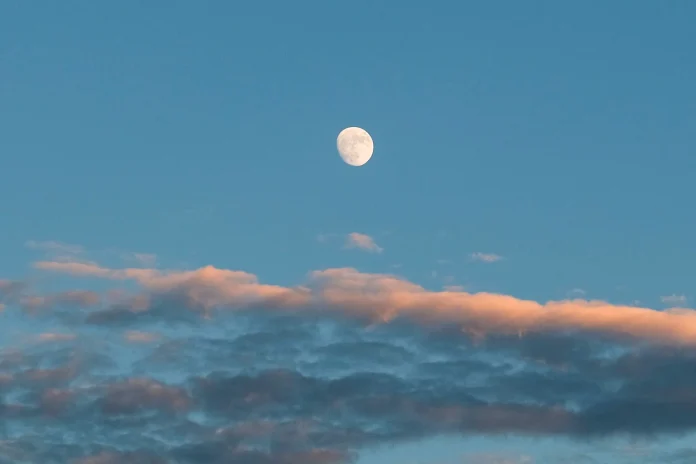The Moon holds more secrets than we often realize. One such mystery lies in the appearance of the Moon during the day. While we usually associate the Moon with nighttime, it can sometimes be spotted in the bright day sky. But have you ever wondered why?
Hidden Presence in the Daytime Moon
Contrary to popular belief, the Moon is not only a nighttime guest in our sky. It shares the day sky with the Sun and other cosmic bodies but is often hidden from view. The reason behind this hidden daytime presence is the massive brightness of the Sun. During the day, the Sun’s heat effectively masks the Moon’s reflected light, making it difficult for our eyes to assess the view.
Impact of Moon’s Cycle on Daytime Visibility
The Moon undergoes a fantastic cycle of phases, each beautifully influencing its daytime visibility. During its waxing and waning phases, the Moon appears closer to Earth in the sky. This increased proximity results in a larger size and a greater surface area reflecting sunlight. Consequently, the Moon during the day becomes more visible, even between the Sun’s glare.
Scientific Explanation of Moon During the Day
To explore the mystery of the daytime Moon, let’s explore the scientific explanation behind this puzzling belief. NASA’s scientist Sarah Noble explains why this mystery of the Moon during the day occurs with the help of the moon cycle.
- Proximity to Earth:
The Moon’s distance from Earth plays an important role in its daytime visibility. When the Moon is at its closest point to Earth, known as perigee, it appears larger and brighter in the sky, making it easier to spot during the day.
- Phase of the Moon:
As mentioned earlier, the Moon’s phase significantly impacts its daytime visibility. During the waxing and waning phases, the Moon reflects more sunlight due to the increasing illuminated area of its surface. This increased reflected light makes the Moon more visible in the daytime sky.
- The Moon’s Orbital Pattern:
The Moon’s orbit around Earth influences its visibility in many ways. During some periods of its orbit, the Moon is positioned in a way that allows for optimal daytime viewing. For example, during a full moon, the Moon is directly opposite the Sun in the sky, causing its entire face to be illuminated by sunlight. This positioning, coupled with the whole phase, makes the Moon during the daytime readily visible, even though it rises just as the Sun sets.
- Weather and Clouds
Beyond the Moon’s natural properties and orbits, external factors like weather and clouds also play a role in daytime moon visibility, explains Sarah Noble. Even if the Moon is positioned favorably for daytime moon viewing, thick clouds can block the view and prevent us from witnessing the Moon in the daytime.
Time of Moon Daytime Appearance
For those eager to catch a glimpse of the Moon during the day, NASA scientist Sarah Noble offers a helpful timing schedule:
- During the days leading up to a full moon, look towards the eastern sky before sunset, and you might be lucky enough to spot the almost full Moon rising before the Sun sets.
- In the days following a full moon, look towards the western sky after sunrise, and you might catch a glimpse of the Moon setting after the Sun has risen.
While the appearance of the Moon during the day has inspired countless artistic and literary expressions, often portraying it as a symbol of romance and mystery, understanding the scientific explanation behind this mystery adds another layer of appreciation for this celestial body. The scientific perspective enhances appreciation for our solar system’s beauty and hidden wonders.
Want to Know A Secret in Space?



